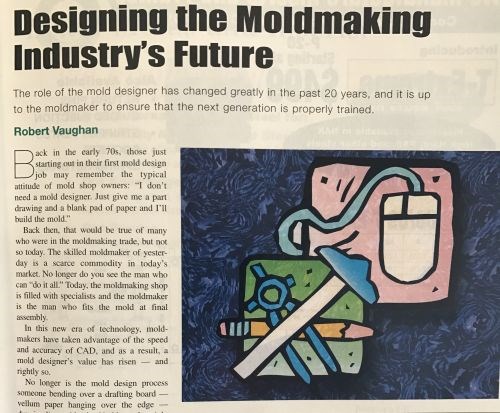Published
Throwback Thursday: The Role of a Mold Designer
This article was published almost 15 years, but its message still resonates today. The difference is how technology has changed since 2002.

Contributor Robert Vaughan explains the new role of the mold designer back in 2002. He says "The mold designer is becoming the "go to" person in many moldmaking shops where the moldmaker has been replaced by work center specialists or skilled machinists. With the engineering of the mold taking place up front instead of on the shop floor, the mold designer is a valuable asset that each company needs to guard. They do not come out of college or a trade school ready to hit the ground running, but are directed by mentors who see the value that it will give to the plastics industry, as well as the value returned to the company.
As the owner of a company or manager of a toolroom or design department, you need to grow the talent that you have. Give a comfortable working environment to them. It doesn't have to be fancy. But it needs to be a place where they will enjoy working. Give them exposure to the industry. There are times that the designer needs to be focused on what he/she is doing. Let's face it, mold costs are going up and you are entrusting a large cash investment with him/her, so give the designer as much of a disruption-free place to work that you can. As the designer grows, he/she can deal with more.
Invest in training. This can include the software that is used, seminars at trade shows and attendance with pay at local trade shows. Make sure that there are trade-related publications available. When you are able to budget the cost, send your designers to larger trade shows or seminars. This accomplishes two objectives: one is continued training and investment in a valued employee, the second is a satisfied employee. Why would your designer go elsewhere when he/she knows you care so much?
The mold designer will give much more back to a company than a quality mold design. He/she will find ways to make his/her work better, yet easier. The designer will add value to a mold that isn't always recognized by the boss, but is seen by those who have to build from the design or run the mold in production. The final reward to the designer is a mold that can run long beyond the life of the product it was designed for."
To read the entire piece, click here.












